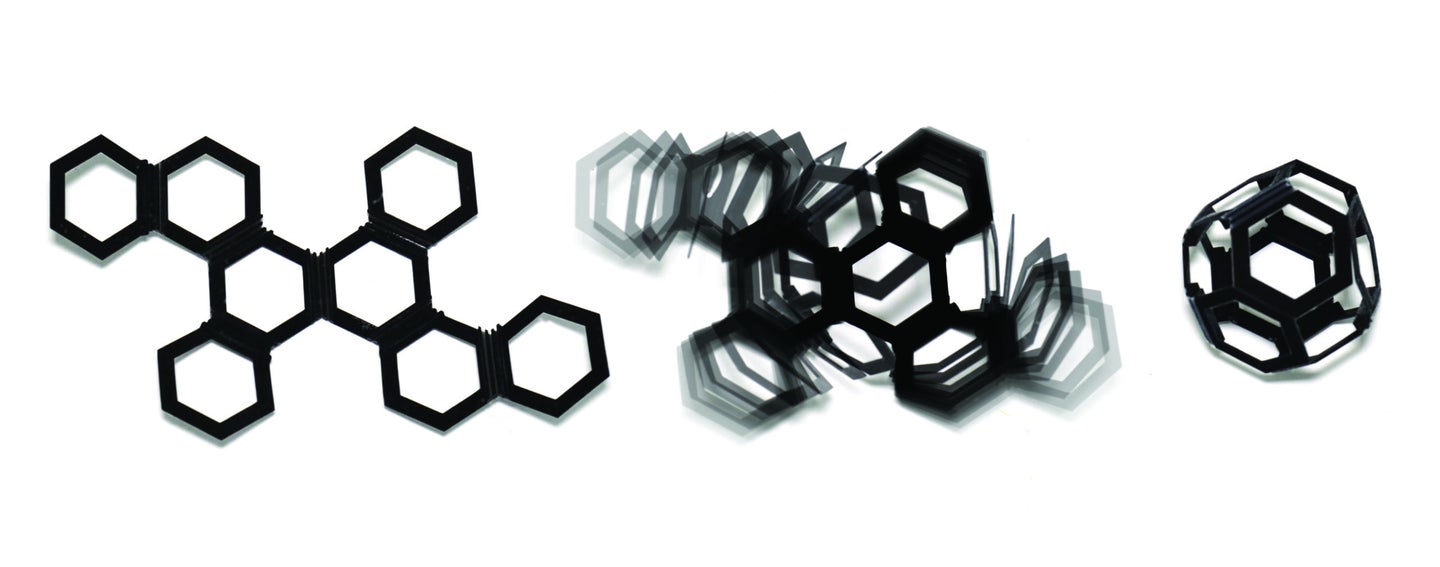The 4D Future of Stuff
Why limit ourselves to printing in just three dimensions?

Ours is a world of static objects, cut, cast, or forged for specific tasks. But let’s say you opened an Ikea box, and the desk inside assembled itself. Or your water pipes shrank as the pressure decreased: no more weak showers, less wasted water. This is the 4D-printed future, and labs are already striving to make it a reality.
The tech builds on 3-D printing—with the added fourth dimension of time, across which objects transform. Skylar Tibbits, founder of MIT’s Self-Assembly Lab, coined the term “4D printing” in a 2013 TED Talk and showed how a straight plastic strand folded into the letters M, I, T when dropped in water.
The emerging research area is a sexy subset within the larger field of programmable matter, which also includes North Carolina State’s self-folding origami polymers and Harvard’s self-assembling robots. Whether 4D-printed or not, programmable matter morphs in response to a contextual cue, be it light, heat, water, air pressure, electricity, or magnetic fields.
Funding from DARPA and the Army Research Lab has accelerated the work in the past two years. Engineers are now working toward self-assembling pop-up bridges, uniforms that adjust their insulation to individual biometrics, and camouflage that changes to match its surroundings. “It teases the imagination,” says Jennifer Lewis, professor of biologically inspired engineering at Harvard. “But a lot more work has yet to be done to see where the real killer application is going to come.”
Meanwhile, the MIT lab focuses on everyday applications of 4D printing. “Our strategy has been to collaborate with companies to get this into the hands of real-world people,” Tibbits says. Last year, his team printed various materials onto a sheet of carbon fiber that, when exposed to heat, curled into a predetermined shape. The tech soon may enable extra-aerodynamic racecar spoilers and airplane wings.
“It changes the way products can be designed,” says Junus Khan, founder of advanced-materials company Carbitex, which partners with the MIT team. “With materials that ship flat and undergo a shape change at the other end, we can consolidate 10 containers into two.”
Programmable 4D-printed materials will need safety measures baked in so bridges don’t spontaneously disassemble and airplane wings don’t freeze in the wrong position. But that doesn’t deter Tibbits’ group at MIT. “Our goal and our mandate,” he says, “is to invent the future.”
This article was originally published in the July 2015 issue of Popular Science.